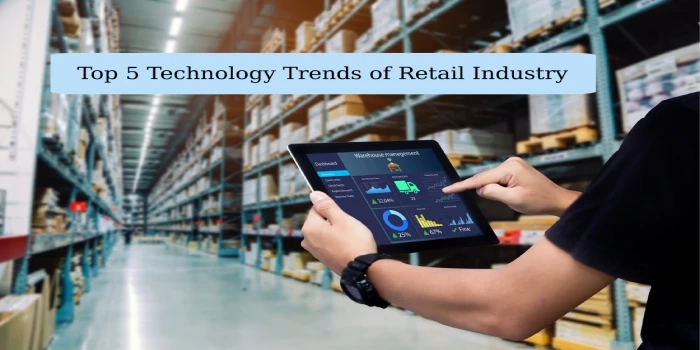Today digital transformation is shaping shopping, online experiences, and even customer personalization of retail stores. The COVID-19 outbreak has changed not only our daily life but also the way of doing business. But by making a huge impact, it also brought several technological innovations. Being involved in software development, we have found several technological trends having a future potential. This blog post describes technology trends that may extremely reshape retail technology solutions the future of the retail industry over the next few years.
[caption class="snax-figure" align="aligncenter" width="662"][/caption]
1. E-Commerce-Friendly POS Systems
During the COVID-19 outbreak, several business owners use e-commerce platforms trying to boost online sales processes. Several retailers integrated POS with E-commerce solution for proper monitoring. Excluding all the bells and whistles, most of the retailers choose those E-commerce systems allowing them to sell in an engaging manner.
2. Machine Learning for Forecasting
The important question for retail industry currently is “How will COVID-19 impact customer demand and how to predict?” Several retail businesses use big data, demand forecasting powered by machine learning. It has become one of the innovative ways to optimize customer and supplier relationship management, logistics and manufacturing processes. Compared to outdated forecasting techniques, machine learning approaches are more adaptable to retail automation solutions as well as implementation. This feature makes ML-based demand forecasting applicable to today’s reality.
3. Augmented Shopping
The important fact to know here is that by 2020 up to 100 million consumers are expected to use Augmented Reality in their shopping experiences. The COVID-19 quarantine has rapidly increased the demand for AR integrated shopping. Augmented shopping attracts customers to interact with products online. Several brands integrated AR long before the pandemic. IKEA and Amazon are using ARKit-based apps to guide customers visualize what new furniture will look like by moving their mobile device cameras around the room.
4. Voice Commerce
Artificial Intelligence is slowly progressing year by year. And with the Alexa, Bixby, Siri, Microsoft Cortana, and Google Home Assistant, no need to open any screen-based app to interact with voice assistants. These smart apps can know your speech and react to the sound of your voice. The survey showed that 60 million people now have at least one smart speaker system at home. Hence, we can expect to see several more products that will be compatible with Alexa. The underlying idea comes from the Internet of Things products including smart mirrors, which engagingly deliver varied content. In retail, voice-assisted technologies help to make sales using voice recognition technology. It is called voice commerce, which is closely related to E-commerce. But instead of typing in a search query, buyers use voice commands to search products.
5. Data Science for Personal Interaction
Data Science technology has made huge progress in today’s personalization tools. This technology made personal recommendations to customers before they know what they want themselves. Amazon drives its 35% of sales from the recommendation engine. Rather than annoying people to download a mobile app, the B2B e-commerce companies use incentives based on consumer desires and necessities. By applying machine learning techniques, the recommendation system gathers data about similar customers and builds shopping profiles.
Wrapping Up:
As per the above discussion, the trends followed by web designing companies serve the needs of entrepreneurs and visitors both. Retail business is facing severe challenges due to COVID-19 and to bring it on track it is important to integrate these trends. As per the latest trends and demands, the experts select the right retail model. All models are having their own benefits; it’s up to you which one to select. The trends are nothing if the strategies are not properly implemented.


